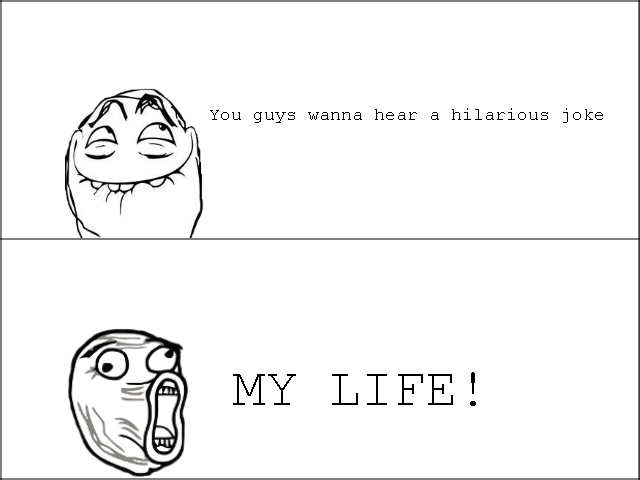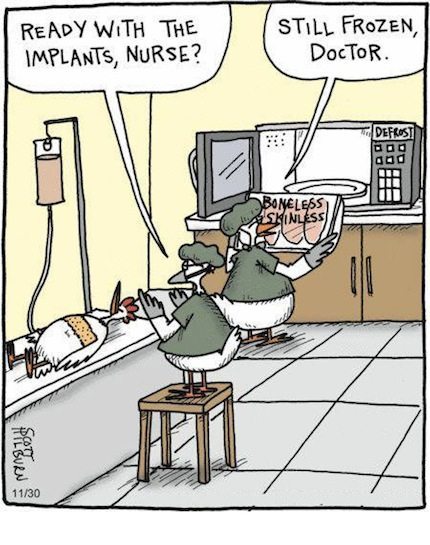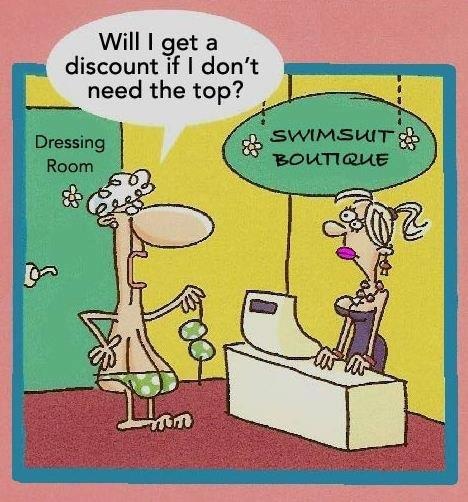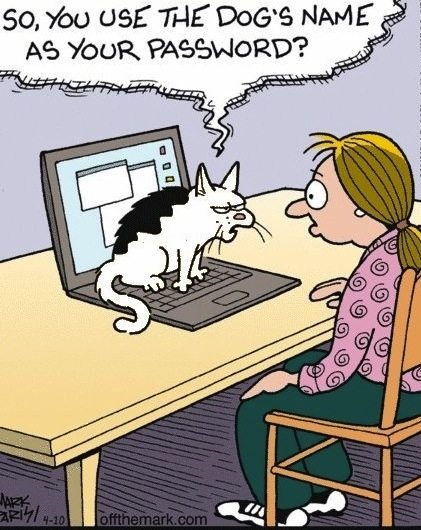Source:- Google.com.pk
It is no great secret that, over the years, Wikipedia has seen many colourful moments of fun. Also no great secret is that Wikipedia has seen many forms of vandalism. Occasionally, an edit falls into both categories: it is vandalism, needing to be reverted, but it is also creative, and some Wikipedians find it entertaining. For many years, the bits of vandalism and/or fun that struck people's fancy were kept here on a page called "Bad Jokes and Other Deleted Nonsense", or "BJAODN". In fact, it was one of the oldest pages on Wikipedia, having been created some time before January 26, 2001. Here is the original explanation of the page:
We need a page where bad jokes and other deleted nonsense can rest in peace. So, here it is! [I'm half tempted to suggest keeping the jokes inline with the pages, as they must sort of give the encyclopedia some lively colour. But I do know it'd just get carried away and turn into an encyclopedia of silliness, so look forward to frequent updates of this page.
— BryceHarrington
However, in 2007, consensus (sort of) shifted against keeping most BJAODN on Wikipedia (see Wikipedia talk:Silly Things), and it came to be viewed by many as encouraging vandalism. Things are no longer added to this group of pages on Wikipedia itself (except on rare occasions), but have been moved to another site, and only a few highlights are maintained below. (Please go to an external wiki to add to BJAODN. Thank you very much.)
The "world's funniest joke" is a term used by Richard Wiseman of the University of Hertfordshire in 2002 to summarize one of the results of his research. For his experiment, named LaughLab, he created a website where people could rate and submit jokes.[1] Purposes of the research included discovering the joke that had the widest appeal and understanding among different cultures, demographics and countries.
The History Channel eventually hosted a special on the subject.[citation needed]
The jokes
The winning joke, which was later found to be based on a 1951 Goon Show sketch by Spike Milligan, was submitted by Gurpal Gosal of Manchester:
Two hunters are out in the woods when one of them collapses. He doesn't seem to be breathing and his eyes are glazed. The other guy whips out his phone and calls the emergency services. He gasps, "My friend is dead! What can I do?" The operator says "Calm down. I can help. First, let's make sure he's dead." There is a silence, then a gun shot is heard. Back on the phone, the guy says "OK, now what?"
In the comedy field, humour induces an "economised expenditure of emotion" (Freud calls it "economy of affect" or "economy of sympathy". Freud produced this final part of his interpretation many years later, in a paper later supplemented to the book.). In other words, the joke erases an emotion that should be felt about an event, making us insensitive to it.e.g.: "yo momma" jokes. The profound meaning of the void feeling of a humour joke is "I'm a cynic". An example from Woody Allen:
Three times I've been mistaken for Robert Redford. Each time by a blind person.
This field of jokes is still a grey area, being mostly unexplored. Extensive use of this kind of humour can be found in the work of British satirist Chris Morris, like the sketches of the Jam television program.
Black humour and sarcasm belong to this field.
Political jokes are usually a form of satire. They generally concern politicians and heads of state, but may also cover the absurdities of a country's political situation. A prominent example of political jokes would be political cartoons. Two large categories of this type of jokes exist. The first one makes fun of a negative attitude to political opponents or to politicians in general. The second one makes fun of political clichés, mottoes, catch phrases or simply blunders of politicians. Some, especially the "you have two cows" genre, derive humour from comparing different political systems.
Professional humour includes caricatured portrayals of certain professions such as lawyers, and in-jokes told by professionals to each other.
Mathematical jokes are a form of in-joke, generally designed to be understandable only by insiders. (They are also often strictly visual jokes.)
Ethnic jokes exploit ethnic stereotypes. They are often racist and frequently considered offensive. For example, the British tell jokes starting "An Englishman, an Irishman and a Scotsman..." which exploit the supposed parsimony of the Scot, stupidity of the Irish or rigid conventionality of the English. Such jokes exist among numerous peoples.
Sexist jokes exploit sexual stereotypes. They are inherently sexist, and are increasingly considered offensive.
Jokes based on other stereotypes (such as blonde jokes) are often considered funny.
Religious jokes fall into several categories:
Jokes based on stereotypes associated with people of religion (e.g. nun jokes, priest jokes, or rabbi jokes)
Jokes on classical religious subjects: crucifixion, Adam and Eve, St. Peter at The Gates, etc.
Jokes that collide different religious denominations: "A rabbi, a medicine man, and a pastor went fishing..."
Letters and addresses to God.
Self-deprecating or self-effacing humour is superficially similar to racial and stereotype jokes, but involves the targets laughing at themselves. It is said to maintain a sense of perspective and to be powerful in defusing confrontations. A common example is Jewish humour. A similar situation exists in the Scandinavian "Ole and Lena" joke.
Self-deprecating humour has also been used by politicians, who recognise its ability to acknowledge controversial issues and steal the punch of criticism. For example, when Abraham Lincoln was accused of being two-faced he replied, "If I had two faces, do you think this is the one I'd be wearing?".
Dirty jokes are based on taboo, often sexual, content or vocabulary. The definitive studies on them have been written by Gershon Legman.
Other taboos are challenged by sick jokes and gallows humour, and to joke about disability is considered in this group.
Surrealist or minimalist jokes exploit semantic inconsistency, for example: Q: What's red and invisible? A: No tomatoes..
Anti-jokes are jokes that are not funny in regular sense, and often can be decidedly unfunny, but rely on the let-down from the expected joke to be funny in itself.
An elephant joke is a joke, almost always a riddle or conundrum and often a sequence of connected riddles, frequently operating on a surrealistic, anti-humorous or meta-humorous level, that involves an elephant.
Jokes involving non-sequitur humour, with parts of the joke being unrelated to each other; e.g. "My uncle once punched a man so hard his legs became trombones", from The Mighty Boosh TV series.
Dark humour is often used in order to deal with a difficult situation in a manner of "if you can laugh at it, it won't kill you". Usually those jokes make fun of tragedies like death, accidents, wars, catastrophes or injuries.
Jokes have been a part of human culture since at least 1900 BC. According to research conducted by Dr Paul McDonald of the University of Wolverhampton, a fart joke from ancient Sumer is currently believed to be the world's oldest known joke. Britain's oldest joke, meanwhile, is a 1,000-year-old double-entendre that can be found in the Codex Exoniensis.
A recent discovery of a document called Philogelos (The Laughter Lover) gives us an insight into ancient humour. Written in Greek by Hierocles and Philagrius, it dates to the third or fourth century AD, and contains some 260 jokes. Considering humour from our own culture as recent as the 19th century is at times baffling to us today, the humour is surprisingly familiar. They had different stereotypes: the absent-minded professor, the eunuch, and people with hernias or bad breath were favourites. A lot of the jokes play on the idea of knowing who characters are:
A barber, a bald man and an absent-minded professor take a journey together. They have to camp overnight, and so decide to take turns watching the luggage. When it's the barber's turn, he gets bored, so amuses himself by shaving the head of the professor. When the professor is woken up for his shift, he feels his head, and says "How stupid is that barber? He's woken up the bald man instead of me."
There is even a joke similar to Monty Python's "Dead Parrot" sketch: a man buys a slave, who dies shortly afterwards. When he complains to the slave merchant, he is told: "He didn't die when I owned him." Comic Jim Bowen has presented them to a modern audience. "One or two of them are jokes I've seen in people's acts nowadays, slightly updated. They put in a motor car instead of a chariot - some of them are Tommy Cooper-esque."
Psychology of jokes
Why people laugh at jokes has been the subject of serious academic study, examples being:
Immanuel Kant, in Critique of Judgement (1790) states that "Laughter is an effect that arises if a tense expectation is transformed into nothing." Here is Kant's two-century old joke and his analysis:
An Englishman at an Indian's table in Surat saw a bottle of ale being opened, and all the beer, turned to froth, rushed out. The Indian, by repeated exclamations, showed his great amazement. - Well, what's so amazing in that? asked the Englishman. - Oh, but I'm not amazed at its coming out, replied the Indian, but how you managed to get it all in. - This makes us laugh, and it gives us a hearty pleasure. This is not because, say, we think we are smarter than this ignorant man, nor are we laughing at anything else here that it is our liking and that we noticed through our understanding. It is rather that we had a tense expectation that suddenly vanished.
Henri Bergson, in his book Le rire (Laughter, 1901), suggests that laughter evolved to make social life possible for human beings.
Sigmund Freud's "Jokes and their Relation to the Unconscious". (Der Witz und seine Beziehung zum Unbewußten).
Arthur Koestler, in The Act of Creation (1964), analyses humour and compares it to other creative activities, such as literature and science.
Marvin Minsky in Society of Mind (1986).
Marvin Minsky suggests that laughter has a specific function related to the human brain. In his opinion jokes and laughter are mechanisms for the brain to learn nonsense. For that reason, he argues, jokes are usually not as funny when you hear them repeatedly.
Edward de Bono in "The Mechanism of the Mind" (1969) and "I am Right, You are Wrong" (1990).
Edward de Bono suggests that the mind is a pattern-matching machine, and that it works by recognising stories and behaviour and putting them into familiar patterns. When a familiar connection is disrupted and an alternative unexpected new link is made in the brain via a different route than expected, then laughter occurs as the new connection is made. This theory explains a lot about jokes. For example:
Why jokes are only funny the first time they are told: once they are told the pattern is already there, so there can be no new connections, and so no laughter.
Why jokes have an elaborate and often repetitive set up: The repetition establishes the familiar pattern in the brain. A common method used in jokes is to tell almost the same story twice and then deliver the punch line the third time the story is told. The first two tellings of the story evoke a familiar pattern in the brain, thus priming the brain for the punch line.
Why jokes often rely on stereotypes: the use of a stereotype links to familiar expected behaviour, thus saving time in the set-up.
Why jokes are variants on well-known stories (e.g. the genie and a lamp and a man walks into a bar): This again saves time in the set up and establishes a familiar pattern.
In 2002, Richard Wiseman conducted a study intended to discover the world's funniest joke . Some elements of jokes have been observed in the Laugh Factory's report :
a feeling of superiority over the subject of the joke.
a sudden realization of a misconception(or of an over thought premise) or the realization that a subject has made an incongruous decision
edgy dialogue about sensitive topics such as marriage, morality, and illness.
that in animal jokes, those that feature ducks are the most funny
Laughter, the intended human reaction to jokes, is healthy in moderation, uses the abdominal muscles, and releases endorphins, natural "feel good" chemicals, into the brain.
Many people also look to contextual jokes as a coping mechanism to get through hard times. This is referred to as, survivor humor in which jokes are designed specifically for those who have been through an extreme tragedy. People who did not experience the tragedy are not likely to fully appreciate these jokes.
Hilarious Jokes Jokes for Kids That are Really Funny in English In Hindi To Tell In Urdu Knock Knock Tagalog
Hilarious Jokes Jokes for Kids That are Really Funny in English In Hindi To Tell In Urdu Knock Knock Tagalog
Hilarious Jokes Jokes for Kids That are Really Funny in English In Hindi To Tell In Urdu Knock Knock Tagalog
Hilarious Jokes Jokes for Kids That are Really Funny in English In Hindi To Tell In Urdu Knock Knock Tagalog
Hilarious Jokes Jokes for Kids That are Really Funny in English In Hindi To Tell In Urdu Knock Knock Tagalog
Hilarious Jokes Jokes for Kids That are Really Funny in English In Hindi To Tell In Urdu Knock Knock Tagalog
Hilarious Jokes Jokes for Kids That are Really Funny in English In Hindi To Tell In Urdu Knock Knock Tagalog
Hilarious Jokes Jokes for Kids That are Really Funny in English In Hindi To Tell In Urdu Knock Knock Tagalog
Hilarious Jokes Jokes for Kids That are Really Funny in English In Hindi To Tell In Urdu Knock Knock Tagalog
Hilarious Jokes Jokes for Kids That are Really Funny in English In Hindi To Tell In Urdu Knock Knock Tagalog
Hilarious Jokes Jokes for Kids That are Really Funny in English In Hindi To Tell In Urdu Knock Knock Tagalog
Hilarious Jokes Jokes for Kids That are Really Funny in English In Hindi To Tell In Urdu Knock Knock Tagalog
Hilarious Jokes Jokes for Kids That are Really Funny in English In Hindi To Tell In Urdu Knock Knock Tagalog
Hilarious Jokes Jokes for Kids That are Really Funny in English In Hindi To Tell In Urdu Knock Knock Tagalog
Hilarious Jokes Jokes for Kids That are Really Funny in English In Hindi To Tell In Urdu Knock Knock Tagalog
Hilarious Jokes Jokes for Kids That are Really Funny in English In Hindi To Tell In Urdu Knock Knock Tagalog
Hilarious Jokes Jokes for Kids That are Really Funny in English In Hindi To Tell In Urdu Knock Knock Tagalog
















No comments:
Post a Comment